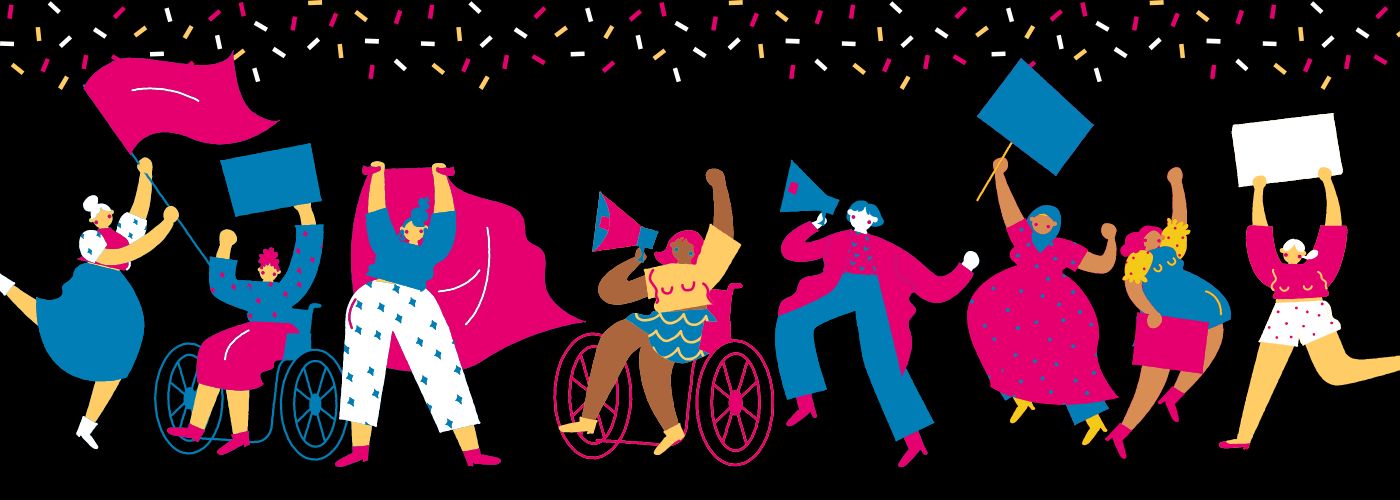The Americans with Disabilities Act Celebrates 33 Years
How the ADA Impacts Online Video Accessibility [Free Ebook]
July 26, 2023, marks the 33rd anniversary of the Americans with Disabilities Act (ADA), and there are many reasons to celebrate ADA33.
The ADA has made many positive impacts since being signed into law 33 years ago. Because of the ADA:
- Television shows, films, and other media must provide closed captions for people who are deaf or hard of hearing.
- Concerts, theaters, and other live entertainment venues must provide sign language interpreters.
- Museums must reduce barriers for people who are blind or have low vision by offering audio description and tactile exhibits.
- Public transportation must ensure that people with mobility devices can safely and easily navigate their towns and cities.
In this post, we discuss how the ADA has impacted the disability community over the past 33 years and offer ideas on how to commemorate this momentous occasion.
How the ADA Impacts Online Video Accessibility
What is the ADA?
The ADA is a civil rights law prohibiting discrimination against individuals with disabilities. The act and its amendments guarantee equal opportunity for persons with disabilities in employment, state and local government services, public accommodations, commercial facilities, and transportation. Both public and private entities are affected by the ADA. The ADA is divided into five titles (or sections) related to different areas of public life.
This civil rights statute limits discriminatory practices towards disabled individuals. When the ADA passed, it was the first time a law ensured disabled individuals would not be excluded from participation in essential everyday activities.
The ADA aims to break down barriers for disabled people and enables society to benefit from their skills and contributions.
The ADA Evolutionary Timeline
The Americans with Disabilities Act has changed quite a bit over the past 33 years. Let’s explore how the law came to be, how it evolved over the years, and where it stands today.
Origins
The ADA’s idea came in 1986 from a group, now called the National Council on Disability, that recommended the legislative enactment of a comprehensive equal-opportunity law. In 1988, the first version of the ADA was written and introduced to United States legislators.
After revisions, the ADA was passed by the Senate in 1989 and was signed into law by President George H. W. Bush on July 26, 1990.
In 1991, regulations were issued for employment, state and local government, public accommodations, and telecommunications.
Evolution
Throughout the remainder of the 1990s and into the 2000s, the ADA began to evolve. Titles I through IV fell into full effect, delivering regulations across industries.
In two landmark Supreme Court cases, courts redefined the term “disability,” consequently narrowing the population of those who were protected by the ADA. However, in 2008, the ADA Amendments Act (ADAAA) was passed by President George W. Bush to counteract the Supreme Court’s narrow interpretation of disability. The Amendment ensured that the ADA would furthermore provide broad protection from discrimination against people with disabilities.
ADA Today
Currently, the ADA lacks explicit language and regulations regarding digital accessibility. In 2010, the Department of Justice (DOJ) began developing accessibility regulations under the ADA for electronic communications and information technology.
However, in July of 2017, the DOJ rulemakings were placed on the department’s “inactive list,” Then, on December 26, they were officially withdrawn. This left many organizations unsure about digital accessibility compliance and contributed to a slew of digital accessibility lawsuits from 2018 to present day. UsableNet reported in their latest Mid-Year Digital Accessibility Lawsuit Report that a whopping 4,220 ADA lawsuits are expected by the end of 2023 alone, nearly double 2018’s 2,314 lawsuits.
But six years later, digital accessibility is back in the spotlight for the DOJ. Recent high-profile settlements such as UC Berkeley’s Consent Decree with the DOJ and the joint “Dear Colleague” letter with the DOE have indicated that the DOJ may be pivoting back to making digital accessibility a priority for future iterations of the ADA.
Other landmark cases over the years, such as that of Domino’s, Netflix, Hulu, Harvard University, and Massachusetts Institute of Technology (MIT), have delivered additional clarity for expectations regarding accessibility for digital content and services under the ADA.
A Look Towards the Future
The ADA has played a significant role in creating a more accessible society, yet discrimination and barriers remain, including in transportation, podcasting, and more. As we celebrate the progress made, we should each move forward with a commitment to continue advocating for disability rights and inclusivity in our communities and beyond.
Learn More About the ADA and How It Affects Video Accessibility ➡️
How to Celebrate
Looking for ideas to help mark the occasion? Here are some ways you can celebrate the ADA:
Share on Social Media
ADAanniversary.org encourages people to spread the word. On a social media platform of your choosing, use #ADA33 and #ThanksToTheADA to share what the ADA means to you. Get creative and share any media, such as a video, picture, or written word.
Be sure the content you share is accessible to everyone. Include captions, audio description, descriptive links, alternative text, transcripts, and adequate color contrast as needed.
Lift Voices
If you don’t have your own ADA-related story, you can celebrate by lifting the voices of those with disabilities. With consent, you can share the content of those with disabilities or those who advocate for accessibility. In this way, you can show your support for the occasion and the community.
Read Stories
Another way to celebrate is to read stories from the people who benefit most from accessibility and to become educated on how accessibility impacts people within our community.
- Read stories from those who benefit from digital accessibility on Faces Behind the Screen.
- Learn more about the ADA through ADA National Network resources.
- Read essays and books by disabled writers, such as Demystifying Disability, Disability Visibility, ADA30 in Color, Care Work: Dreaming Disability Justice, and Brilliant Imperfection: Grappling with Cure.
- Peruse thirty short essays about the law, the anniversary, and the cultural impact of ADA.
Happy 33rd Anniversary to the Americans with Disabilities Act!
This blog post was originally published by Jaclyn Leduc on July 26, 2020, and has since been updated for accuracy, clarity, and freshness.







